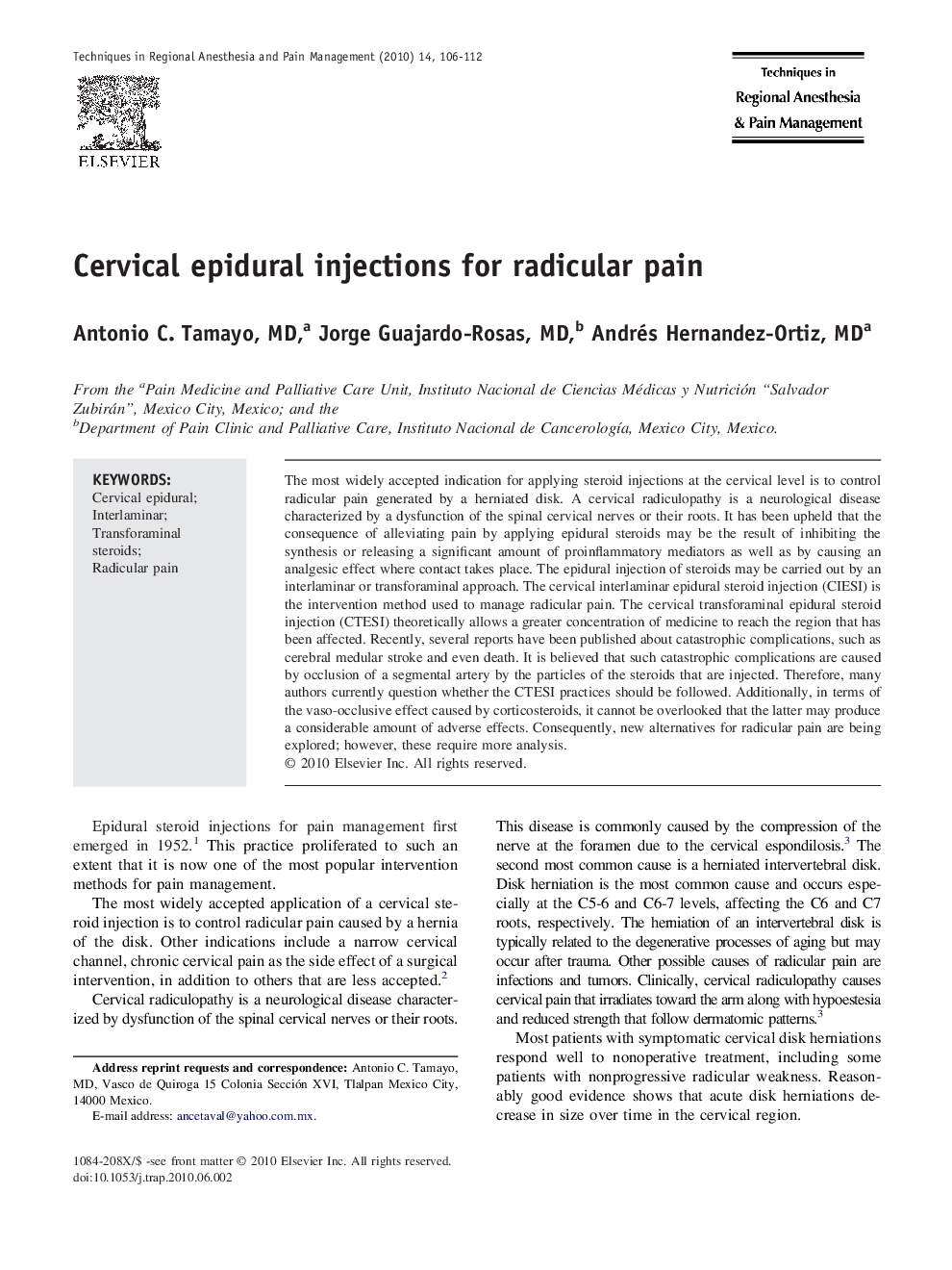| Article ID | Journal | Published Year | Pages | File Type |
|---|---|---|---|---|
| 2772393 | Techniques in Regional Anesthesia and Pain Management | 2010 | 7 Pages |
The most widely accepted indication for applying steroid injections at the cervical level is to control radicular pain generated by a herniated disk. A cervical radiculopathy is a neurological disease characterized by a dysfunction of the spinal cervical nerves or their roots. It has been upheld that the consequence of alleviating pain by applying epidural steroids may be the result of inhibiting the synthesis or releasing a significant amount of proinflammatory mediators as well as by causing an analgesic effect where contact takes place. The epidural injection of steroids may be carried out by an interlaminar or transforaminal approach. The cervical interlaminar epidural steroid injection (CIESI) is the intervention method used to manage radicular pain. The cervical transforaminal epidural steroid injection (CTESI) theoretically allows a greater concentration of medicine to reach the region that has been affected. Recently, several reports have been published about catastrophic complications, such as cerebral medular stroke and even death. It is believed that such catastrophic complications are caused by occlusion of a segmental artery by the particles of the steroids that are injected. Therefore, many authors currently question whether the CTESI practices should be followed. Additionally, in terms of the vaso-occlusive effect caused by corticosteroids, it cannot be overlooked that the latter may produce a considerable amount of adverse effects. Consequently, new alternatives for radicular pain are being explored; however, these require more analysis.
